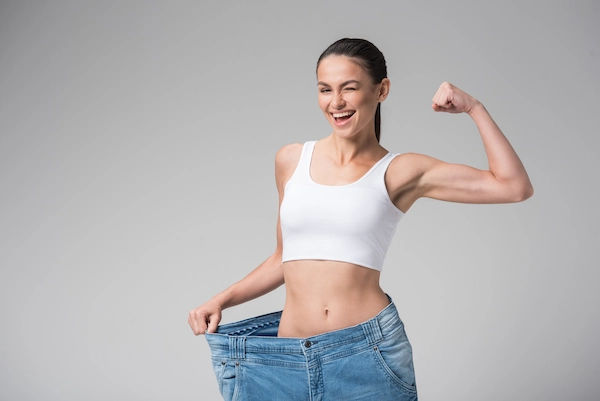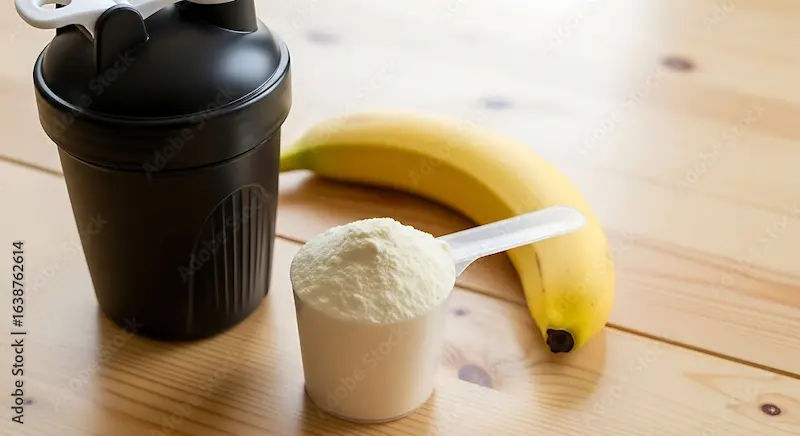10 Best Home Exercises to Lose Weight Fast
Burn calories at home with 10 proven weight loss exercises. Build a safe fitness routine with step-by-step tips, FAQs, and expert-backed guidance.

Written by Dr. Mohammed Kamran
Reviewed by Dr. Rohinipriyanka Pondugula MBBS
Last updated on 14th Nov, 2025

Introduction
If you want to slim down without going to a gym, you’re in the right place. The best home workouts can help you burn calories, boost your metabolism, and build strength—without needing any fancy or expensive equipment. Exercising at home gives you flexibility, privacy, and the freedom to move at your own pace. Below, you’ll find 10 effective weight loss exercises you can do right in your living room, along with a simple fitness routine to help you stay consistent. We’ll also cover safety tips, a sample 20-minute plan, and answers to common questions. The goal is safe, steady progress that you can stick with long term—not quick fixes or extreme routines.
Consult a Top General Practitioner for Personalised Advice
Why home workouts help with weight loss?
Home workouts offer multiple benefits that support consistent weight loss and better overall fitness.
- Convenience: You’re more likely to exercise when it’s easy to start. Home workouts remove travel time, gym crowds, and performance anxiety, making fitness more accessible and less intimidating.
- Efficiency: Short, focused sessions—including intervals—can deliver strong results when done consistently. Even 10–20 minutes can be effective when the intensity is appropriate.
- Strength + cardio: Combining resistance moves with aerobic activity helps preserve muscle while you lose fat. Maintaining muscle is essential for keeping your metabolism healthy.
- Habit building: A realistic fitness routine that fits your schedule is key for long-term weight management. When exercise blends into your daily routine, it becomes second nature rather than a chore.
How to build a balanced fitness routine at home?
Evidence-based guidance from organisations like the WHO and CDC recommends:
- Aerobic activity: Aim for at least 150–300 minutes of moderate intensity OR 75–150 minutes of vigorous intensity each week, or a mix of both.
- Muscle-strengthening: Train major muscle groups at least 2 days per week, focusing on compound movements.
- Movement breaks: Reduce long periods of sitting by taking short activity breaks throughout the day. This improves circulation and energy.
Practical tips:
- Start small and progress gradually—for example, begin with 10–20 minutes most days.
- Mix cardio intervals with strength moves to maximise time and improve calorie burn.
- Schedule your sessions like appointments to help your fitness routine stick.
The 10 best weight loss exercises you can do at home
Use a sturdy floor, supportive footwear, and enough space to move safely. For time-based sets, try 30–45 seconds of work with 15–30 seconds of rest. Do 2–4 rounds depending on your fitness level. Modify any move to stay pain-free and maintain good form.
1) Step-Ups (Stairs or Sturdy Step)
- What: Step onto a stair or secure step with your whole foot, then step down and repeat, alternating legs.
- Why it helps: Elevates heart rate while strengthening legs and glutes—excellent for calorie burn and day-to-day functional strength.
- Form cues: Keep your chest lifted and your knee tracking over the mid-foot to avoid strain.
- Make it easier/harder: Use a lower step or slow the pace; add a backpack for load or drive the knee up at the top.
2) Jumping Jacks (or Low-Impact Jacks)
- What: Classic full-body cardio. For a joint-friendly version, step one foot out at a time instead of jumping.
- Why it helps: Simple, rhythmic movement that raises the heart rate quickly and increases circulation.
- Form cues: Land softly; keep your core engaged and shoulders relaxed.
- Progression: Increase speed or time; add a light resistance band around forearms for more upper-body activation.
3) High Knees (or Marching High Knees)
- What: Run or march in place, bringing knees toward hip height.
- Why it helps: A cardio booster that also activates your core and hip flexors, helping improve coordination and posture.
- Form cues: Stay tall; pump the arms for extra momentum and calorie burn.
- Progression: Go from marching to a light jog, then to quick high knees.
4) Mountain Climbers
- What: From a high plank, drive knees toward chest one at a time at a brisk pace.
- Why it helps: Combines core stability with cardio for an efficient calorie-burning move.
- Form cues: Keep shoulders over wrists and hips level; move smoothly.
- Modification: Elevate hands on a bench or counter to reduce wrist and shoulder load.
5) Burpees (with or without Push-Up)
- What: Squat, place hands down, step or jump to a plank, perform an optional push-up, then return to standing and reach overhead.
- Why it helps: Full-body move that builds strength and stamina, helping burn more energy in a shorter time.
- Form cues: Keep a neutral spine; land softly; step instead of jump if needed.
- Progression: Add a jump at the top or a push-up in the plank.
6) Bodyweight Squats (or Chair Squats)
- What: Sit hips back and down, then stand tall. Use a chair’s edge as a target if learning.
- Why it helps: Strengthens quads, glutes, and core—key for daily mobility and metabolic health.
- Form cues: Knees track over mid-foot; keep heels grounded and chest lifted.
- Progression: Add a backpack for resistance or pause at the bottom.
7) Alternating Reverse Lunges
- What: Step one foot back into a lunge, drop the back knee toward the floor, then return to standing and switch sides.
- Why it helps: Builds single-leg strength and balance, with less knee stress for many people than forward lunges.
- Form cues: Keep the front knee over the ankle and maintain a tall torso.
- Modification: Hold a stable surface for balance; shorten the range of motion.
8) Push-Ups (Wall, Incline, or Floor)
- What: Press your body away from a wall, countertop, or floor while maintaining a straight line from head to heels.
- Why it helps: Builds chest, shoulders, triceps, and core strength, which supports better posture and muscle tone.
- Form cues: Elbows at about a 45-degree angle; brace your core.
- Progression: Move from wall to counter to floor; slow the lowering phase.
9) Plank Variations (Forearm, Side Plank, Plank Jacks)
- What: Hold a stable plank, or add gentle movements like stepping feet out and in.
- Why it helps: Trains core stability, which improves balance and supports good form in all other weight loss exercises.
- Form cues: Engage glutes and abs; avoid sagging hips.
- Modification: Drop knees or elevate forearms on a bench.
10) Shadow Boxing or Kickboxing Bursts
- What: Throw controlled punches (jab, cross, hook) or light kicks into the air while keeping your core engaged.
- Why it helps: Fun, low-equipment cardio that raises the heart rate and improves coordination and focus.
- Form cues: Stay light on your feet; exhale with each punch; keep hands up.
- Progression: Add intervals (for example, 30 seconds fast, 30 seconds easy).
Sample 20-minute home workout for weight loss
This circuit blends strength and cardio. Warm up for 3–5 minutes first (march in place, arm circles, hip hinges).
Circuit (repeat 3–4 times):
- Step-Ups – 40 seconds
- Push-Ups (incline if needed) – 30 seconds
- Jumping Jacks or Low-Impact Jacks – 40 seconds
- Bodyweight Squats – 40 seconds
- Mountain Climbers (elevated if needed) – 30 seconds
- Plank – 30 seconds
- Shadow Boxing – 40 seconds
- Rest 20–30 seconds between moves as needed.
- Cool down for 3–5 minutes (slow march, deep breathing), then stretch major muscle groups.
- Progression: make your fitness routine more challenging
The tips include:
- Add time: Increase total session time by 5 minutes once it feels comfortable.
- Add rounds: Go from 2 to 3 circuits, then to 4.
- Add intensity: Shorten rest, move a bit faster while maintaining good form.
- Add resistance: Use a backpack, dumbbells, or resistance bands for squats, lunges, and rows if you have a band.
- Track wins: Note sessions completed, energy levels, and how clothes fit—not just scale weight.
Safety tips for home workouts
The tips include:
- Warm up and cool down: Prepare joints and muscles to reduce injury risk.
- Start where you are: Choose low-impact options if you’re new or returning to exercise.
- Listen to your body: Sharp pain, chest discomfort, dizziness, or severe shortness of breath are signals to stop and seek medical advice.
- Mind your space: Clear floors, secure steps, and wear supportive shoes.
- Medical conditions: If you have chronic conditions, injuries, are pregnant, or recently postpartum, consult your healthcare provider for personalised guidance.
Nutrition and lifestyle essentials that support weight loss
Exercise is powerful, but weight loss also depends on what you eat and how well you recover.
- Balanced plate: Emphasise vegetables, fruits, lean proteins, whole grains, and healthy fats.
- Protein and fibre: These help you feel full and support muscle maintenance during a calorie deficit.
- Hydration: Drink water throughout the day, especially around workouts.
- Sleep and stress: Aim for 7–9 hours of sleep and use stress-management tools such as walking, breathing, and stretching. Both affect hormones related to appetite and recovery.
- Consistency over perfection: Small, repeatable habits beat extreme short-term efforts.
Key takeaways
The key takeaways include:
- The most effective home workouts are the ones you’ll do regularly.
- Combine cardio and strength-focused weight loss exercises for the best results.
- Build a realistic fitness routine, progress gradually, and pair training with supportive nutrition, sleep, and stress management.
- Consistency and safe progression create sustainable, healthy weight loss.
Conclusion
Home workouts can be just as effective as gym sessions when done consistently and with proper form. By choosing exercises that combine strength and cardio, you boost metabolism, build muscle, and burn calories—all from the comfort of your home. The key is to begin where you are, progress steadily, and focus on long-term habits rather than rapid changes. Pairing movement with supportive nutrition, sufficient sleep, and stress management leads to better results over time. Stay patient and celebrate every bit of progress, because small daily actions lead to meaningful, lasting transformation.
Consult a Top General Practitioner for Personalised Advice
Consult a Top General Practitioner for Personalised Advice

Dr. Syed Ismail Ali
General Practitioner
7 Years • MBBS
Hyderabad
Apollo 24|7 Clinic, Hyderabad

Dr Syed Mateen Pasha
General Physician
2 Years • MBBS
Bengaluru
PRESTIGE SHANTHINIKETAN - SOCIETY CLINIC, Bengaluru

Dr. Anand Ravi
General Physician
2 Years • MBBS
Bengaluru
PRESTIGE SHANTHINIKETAN - SOCIETY CLINIC, Bengaluru

Dr. Madhuri Sai Sreepada
General Practitioner
9 Years • MBBS
Hyderabad
BRIGHT SMILES MEDICARE & DENTAL CARE, Hyderabad
Dr. Karanam Kondalamma
General Practitioner
4 Years • MBBS
Hyderabad
KK Clinic, Hyderabad
Consult a Top General Practitioner for Personalised Advice

Dr. Syed Ismail Ali
General Practitioner
7 Years • MBBS
Hyderabad
Apollo 24|7 Clinic, Hyderabad

Dr Syed Mateen Pasha
General Physician
2 Years • MBBS
Bengaluru
PRESTIGE SHANTHINIKETAN - SOCIETY CLINIC, Bengaluru

Dr. Anand Ravi
General Physician
2 Years • MBBS
Bengaluru
PRESTIGE SHANTHINIKETAN - SOCIETY CLINIC, Bengaluru

Dr. Madhuri Sai Sreepada
General Practitioner
9 Years • MBBS
Hyderabad
BRIGHT SMILES MEDICARE & DENTAL CARE, Hyderabad
Dr. Karanam Kondalamma
General Practitioner
4 Years • MBBS
Hyderabad
KK Clinic, Hyderabad
More articles from Weight Loss
Frequently Asked Questions
How many minutes should I exercise per day to lose weight?
Aim for at least 150 minutes of moderate activity per week (about 30 minutes, 5 days) and include 2 days of strength training. If you prefer shorter sessions, you can do vigorous intervals or split activity into 10–15 minute blocks—consistency matters most.
Are HIIT home workouts better than steady cardio for fat loss?
Both can work. High-intensity intervals are time-efficient and improve fitness, while steady cardio is easier to sustain. Choose whichever you can do regularly, and include strength training.
Can I target belly fat with specific weight loss exercises?
Spot reduction isn’t supported by evidence. Core exercises strengthen your midsection but do not choose where fat leaves your body. Fat loss comes from overall activity, nutrition, and lifestyle.
What if I have knee pain—are there low-impact options?
Yes. Try step-ups at a controlled height, low-impact jacks, marching high knees, wall push-ups, bridges, and elevated planks. Keep ranges of motion comfortable and consult a professional if needed.
Do I need equipment to see results?
No. Bodyweight moves can be very effective. Over time, simple additions like a resistance band, a pair of dumbbells, or a sturdy step can increase challenge and variety.




